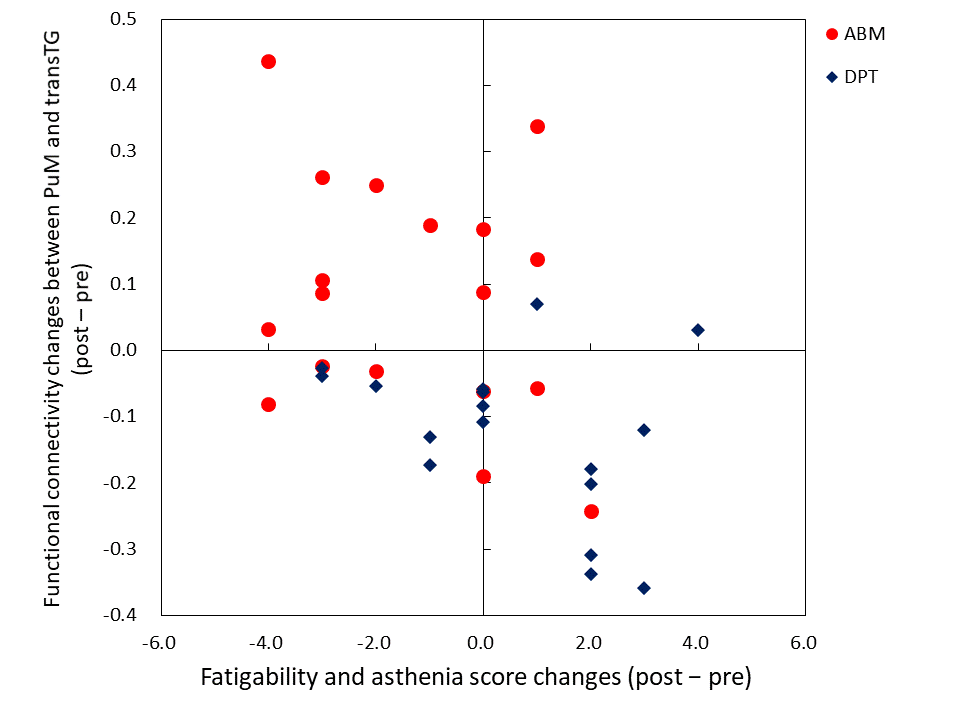Toyama University School of Medicine
Department of Clinical and Cognitive Neuroscience
Publications
Neurobiological Mechanisms underlying Cognitive Biases


<Related Articles>
-
Hakamata Y*, Mizukami S, Izawa S, Okamura H, Mihara K, Marusak H, Moriguchi Y, Hori H, Hanakawa T, Inoue Y, Tagaya H. (2022). Implicit and explicit emotional memory recall in anxiety and depression: Role of basolateral amygdala and cortisol-norepinephrine interaction. Psychoneuroendocrinology, vol. 136, 105598.
-
Hakamata Y*, Mizukami S, Izawa S, Moriguchi Y, Hori H, Matsumoto N, Hanakawa T, Inoue Y, Tagaya H (2021). Childhood trauma affects autobiographical memory deficits through basal cortisol and prefrontal-extrastriate functional connectivity. Psychoneuroendocrinology, vol. 127, 105172.
-
Hori H, Itoh M, Lin M, Yoshida F, Niwa M, Hakamata Y, Matsui M, Kunugi H, Kim Y (2021). Childhood maltreatment history and attention bias variability in healthy adult women: role of inflammation and the BDNF Val66Met genotype. Translational Psychiatry, vol. 11, 122.
-
Hakamata Y*, Mizukami S, Izawa S, Moriguchi Y, Hori H, Kim Y, Hanakawa T, Inoue Y, Tagaya H (2020). Basolateral amygdala connectivity with subgenual anterior cingulate cortex represents enhanced fear-related memory encoding in anxious humans. Biological Psychiatry: Cognitive Neuroscience and Neuroimaging, vol. 5, 301-310.
-
Hori H*, Itoh M, Yoshida F, Lin M, Niwa M, Hakamata Y, Ino K, Imai R, Ogawa S, Matsui M, Kamoe T, Kunugi H, Kim Y (2020). The BDNF Val66Met polymorphism affects negative memory bias in civilian women with PTSD, Scientific Reports. e3151.
-
Hakamata Y*, Komi S, Sato E, Izawa S, Mizukami S, Moriguchi Y, Motomura Y, Matsui M, Kim Y, Hanakawa T, Inoue Y, Tagaya H (2019). Cortisol-related hippocampal-extrastriate functional connectivity explains the adverse effect of cortisol on visuospatial retrieval. Psychoneuroendocrinology, vol. 109, 104310.
-
Hakamata Y*, Sato E, Komi S, Moriguchi Y, Izawa S, Murayama N, Hanakawa T, Inoue Y, Tagaya H (2016). The functional activity and effective connectivity of pulvinar are modulated by individual differences in threat-related attentional bias. Scientific Reports, 6:34777.
-
Hakamata Y*, Matsui M, Tagaya H (2014). Does neurocognitive function affect cognitive bias toward an emotional stimulus? Association between general attentional ability and attentional bias toward threat. Frontiers in Psychology, vol. 5, 881.
-
Hakamata Y*, Izawa S, Sato E, Komi S, Murayama N, Moriguchi Y, Hanakawa T, Inoue Y, Tagaya H (2013). Higher cortisol levels at diurnal trough predict greater attentional bias towards threat in in healthy young adults. Journal of Affective Disorders, vol.151, 775-779.
-
Hakamata Y* and Hirokuni Tagaya (2011). Cognitive biases in anxiety and depression. The Japanese Journal of Biological Psychiatry, vol. 22: 277-295.
Neurobiological Action Mechanisms of
Cognitive Bias Modification



<Related Articles>
-
Hakamata Y*, Mizukami S, Komi S, Sato E, Moriguchi Y, Motomura Y, Maruo K, Izawa S, Kim Y, Hanakawa T, Inoue Y, Tagaya H (2018). Attentional bias modification alters intrinsic functional network of attentional control: A randomized controlled trial. Journal of Affective Disorders, vol. 238, 472-481.
-
Hakamata Y*, Lissek S, Bar-Haim Y, Britton JC, Fox N, Leibenluft E, Ernst M, Pine DS (2010). Attention Bias Modification Treatment: A meta-analysis towards the establishment of novel treatment for anxiety, Biological Psychiatry, vol.68, 982- 990.

Risk of Developing Anxiety and Depressive Disorders:
High-Risk Personality and Adverse Childhood Experiences
<Related Articles>
-
Hori H and Hakamata Y (2023). Inflammation and traumatic stress (Chapter 8). In book: Stress: Immunology and Inflammation (Eds: Fink G). pp65-75. Academic Press (Elsevier).
-
Hakamata Y*, Hori H, Mizukami S, Izawa S, Yoshida F, Moriguchi Y, Hanakawa T, Inoue Y, Tagaya H (2023). Blunted diurnal interleukin-6 rhythm is associated with amygdala emotional hyporeactivity and depression:
A modulating role of gene-stressor interactions. Frontiers in Psychiatry, vol. 14:1196235. -
Hakamata Y*, Suzuki Y, Kobashikawa H, Hori H* (2022). Neurobiology of early life adversity: A systematic review of meta-analyses towards an integrative account of its neurobiological trajectories to mental disorders. Frontiers in Neuroendocrinology, vol. 65:100994.
-
Hori H*, Izawa S, Yoshida F, Kunugi H, Kim Y, Mizukami S, InoueY, Tagaya H, Hakamata Y* (2022). Association of childhood maltreatment history with salivary interleukin-6 diurnal patterns and C-reactive protein in healthy adults. Brain, Behavior, and Immunity, vol. 101, 377–382.
-
Hakamata Y*, Komi S, Moriguchi Y, Izawa S, Motomura Y, Sato E, Mizukami S, Kim Y, Hanakawa T, Inoue Y, Tagaya H (2017). Amygdala-centred functional connectivity affects daily cortisol concentrations: a putative link with anxiety. Scientific Reports, vol. 7: 8313.
-
Hakamata Y*, Iwase M, Kato T, Senda K, Inada T (2013). The neural correlates of mindful awareness: a possible buffering effect on anxiety-related reduction in subgenual anterior cingulate cortex activity. PLoS One, vol. 8, e75526.
-
Hakamata Y, Iwase M, Iwata H, Kobayashi T, Tamaki T, Nishio M, Matsuda H, Ozaki N, Inada T* (2009). Gender-related differences in relationship between personality traits and cerebral brain glucose metabolism. Psychiatry Research: Neuroimaging, vol. 173, 206-211.
-
Hakamata Y, Mastuoka Y, Inagaki M, Nagamine M, Hara E, Imoto S, Murakami K, Kim Y, Uchitomi Y* (2007). Structure of orbitofrontal cortex and its longitudinal course in cancer-related posttraumatic stress disorder, Neuroscience Research, vol. 59, 383-389.
-
Hakamata Y, Iwase M, Iwata H, Kobayashi T, Tamaki T, Nishio M, Kawahara K, Matsuda H, Ozaki N, Honjo S, Inada T* (2006). Regional brain cerebral glucose metabolism and temperament: A positron emission tomography study. Neuroscience Letters, vol.396, 33-37.
-
Hakamata Y, Takahashi N, Ishihara R, Saito S, Ozaki N, Honjo S, Ono Y, Inada T* (2005). No association between monoamine oxidase A promoter polymorphism and personality traits in Japanese females. Neuroscience Letters, vol.389, 121-123.
-
Hakamata Y and Matsuoka Y* (2007). Neurobiological action mechanisms of cognitive behavioral therapy: a systematic review of functional neuroimaging studies in PTSD. The Japanese Journal of Biological Psychiatry, vol. 18, pp157-173.
